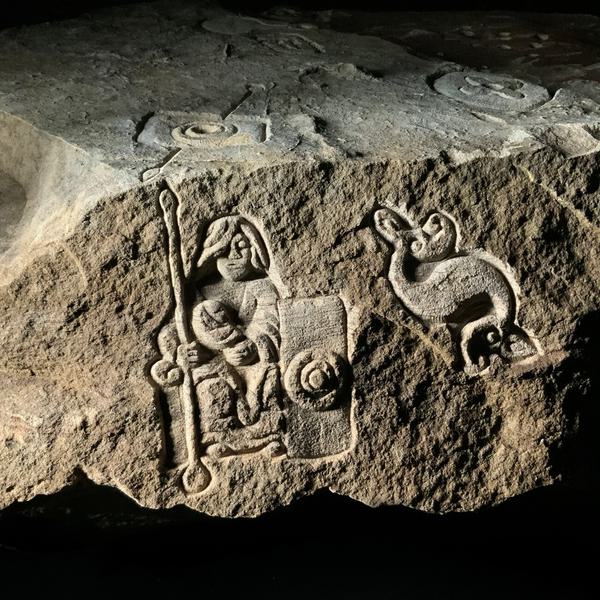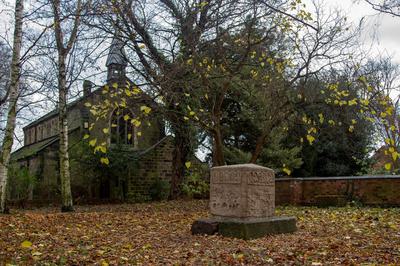The Mither Tap Steen, The Kemnay Steens
By
James Winnett
2020
- Sculpture
- Urban Dynamics & Public Realm
- Participatory & Collaborative
- Stone Carving
- Sculpture
- Public Art
- Stone
- Aberdeenshire
- Scotland
- Folklore
- Commission
Dimensions
110 x 100 x 60
Positioned on the south bank of the river Don, this stone lies downstream from the Boat of Kemnay, one of the main points for crossing the river prior to the construction of a bridge in the 1860s.
This large stone is carved with a variety of imagery and symbols, some of which connect to motifs found on the other stones. A rudimentary step has been cut into the stone, inviting the passer-by to climb up and admire the view.
The Don at this point makes a dramatic 90 degree shift in direction, sweeping to the left and flowing directly towards Bennachie. Mither Tap is particularly prominent from this viewpoint, the exposed granite of the peak and the remains of the surrounding Pictish hill fort clearly visible.
Bennachie is known as ‘Beinn na Ciche’ or ‘hill of the breast’ in Gaelic, owing to the distinctive shape of Mither Tap. The peak is visible across much of Aberdeenshire and it is likely that it had an early religious significance, with numerous standing stones and stone circles in the surrounding landscape. It has also been suggested that the name comes from ‘Benne Cé’, ‘mountain of the people of Cé’, with Cé being a Pictish territory covering the surrounding area. The hill fort itself was active during the 7th and 8th centuries.
A wheel motif can be seen on the upper face of the stone alongside a mirror and comb – a pairing frequently seen in Pictish carvings. Some of the symbols have a central circular depression as if small pebbles could be placed in them. A series of similar shallow holes appear in an arrangement similar to a lunar calendar.
Towards the edge is a rectangular shield crossed with a spear, symbols both of aggression and defence. The combination of the two is sometimes associated with Cocidius, a deity worshipped in northern Britain who the Romans equated both with Mars, god of war and Silvanus, god of forests and wild places.
The spear is aligned both with the peak of Mither Tap and with the setting sun at the summer solstice. It is similar in form to the weapons found on Pictish spearman carvings such as one from Rhynie, a major Pictish power centre of the 4th to 6th centuries.
On the side of the stone is a carving of a seated warrior accompanied by the same shield and spear. A child can be seen at her breast.
Helping Artists Keep Going
Axis is an artist-led charity supporting contemporary visual artists with resources, connection, and visibility.







